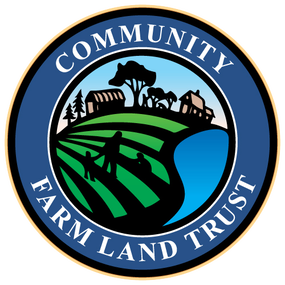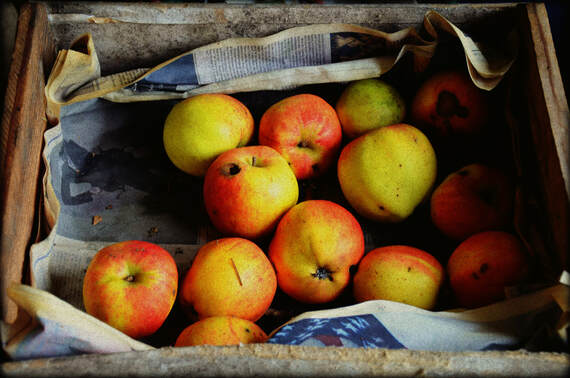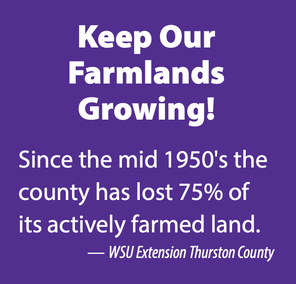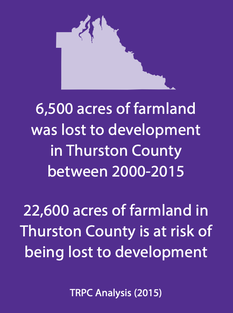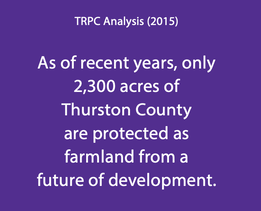Why Preserve
Farmland and Local Farms?
"No issue will be more important to 21st century America than how we use our dwindling land resources. The competition for land—especially productive agricultural land—will intensify as our population grows and communication technologies make it easier for us to live and work in widely dispersed communities. The irreplaceable land that produces our food and provides us with scenic open space, wildlife habitat, and clean water is increasingly at risk from urban sprawl and rural subdivisions. To ensure a prosperous future, we must save our farmland. ”
- William K. Reilly, Former EPA Administrator (Saving American Farmland, 1997)
- William K. Reilly, Former EPA Administrator (Saving American Farmland, 1997)
Local working farmland provides a multitude of benefits to the community:
- Local farms provide fresh, healthy food to our community.
- Food from local farmland is distributed through our groceries stores, restaurants, farmers markets, food co-operatives, significantly reducing the carbon footprint of food transportation and distribution.
- Thriving local farms can provide food security in an uncertain future.
- Local farms contribute to food banks and help reduce food insecurity in the community.
- A diverse farming landscape increases habitat for wildlife and promotes biodiversity.
- Farmland provides many free environmental services to the region, contributing to clean air and water.An active farming sector adds to rural economies, providing jobs and supporting local agricultural services businesses.
- A local farming culture creates community around food and local food culture.
In the American Farmland Trust's 2020 report, Farms Under Threat: The State of the States, they found unprecedented insights into the status and fate of American Farmland. "From 2001-2016, 11 million acres of agricultural land were paved over, fragmented, or converted to uses that jeopardize agriculture, curtailing sustainable food production, economic opportunities, and the environmental benefits afforded by well-managed farmland and ranchland."
In Thurston County our farmlands are in danger. The county has one of the largest rates of loss of farmland in Western Washington. Its population has been increasing steadily, contributing to loss of farms and farming as suburban development moves into rural landscapes.
Community Farm Land Trust...In the News
Learn more about the Community Farm Land Trust in the following news and features.
Olympia Food Co-op, Table Fall 2022, pg. 17
Washington Association of Land Trusts (WALT), 2023 Groundswell, pg. 4
Thurston Talks, Community Farm Land Trust's Fresh from the Farm Guide Bursts to 80 Pages and Celebrates Local Farmers, May 20, 2021
The Chronicle, Centralia, Farm Land Trust Purchases 29-Acres James Family Property in Rochester, Sept. 3, 2021
Thurston Talks, Community Farm Land Trust Purchases 29-Acre Portion of Pioneer James Family's 1852 Donation Land Claim, Sept. 2, 2021
The Olympian, Mary Gentry, Local land trusts form partnerships to preserve farmland and river and stream habitat, Aug. 14, 2020
Washington Association of Land Trusts (WALT), Keeping Farmers on Farmland-Pursuing Creative Stategies to Protect Working Land, Oct. 5, 2017 Blog
Olympia Food Co-op, Table Fall 2022, pg. 17
Washington Association of Land Trusts (WALT), 2023 Groundswell, pg. 4
Thurston Talks, Community Farm Land Trust's Fresh from the Farm Guide Bursts to 80 Pages and Celebrates Local Farmers, May 20, 2021
The Chronicle, Centralia, Farm Land Trust Purchases 29-Acres James Family Property in Rochester, Sept. 3, 2021
Thurston Talks, Community Farm Land Trust Purchases 29-Acre Portion of Pioneer James Family's 1852 Donation Land Claim, Sept. 2, 2021
The Olympian, Mary Gentry, Local land trusts form partnerships to preserve farmland and river and stream habitat, Aug. 14, 2020
Washington Association of Land Trusts (WALT), Keeping Farmers on Farmland-Pursuing Creative Stategies to Protect Working Land, Oct. 5, 2017 Blog
